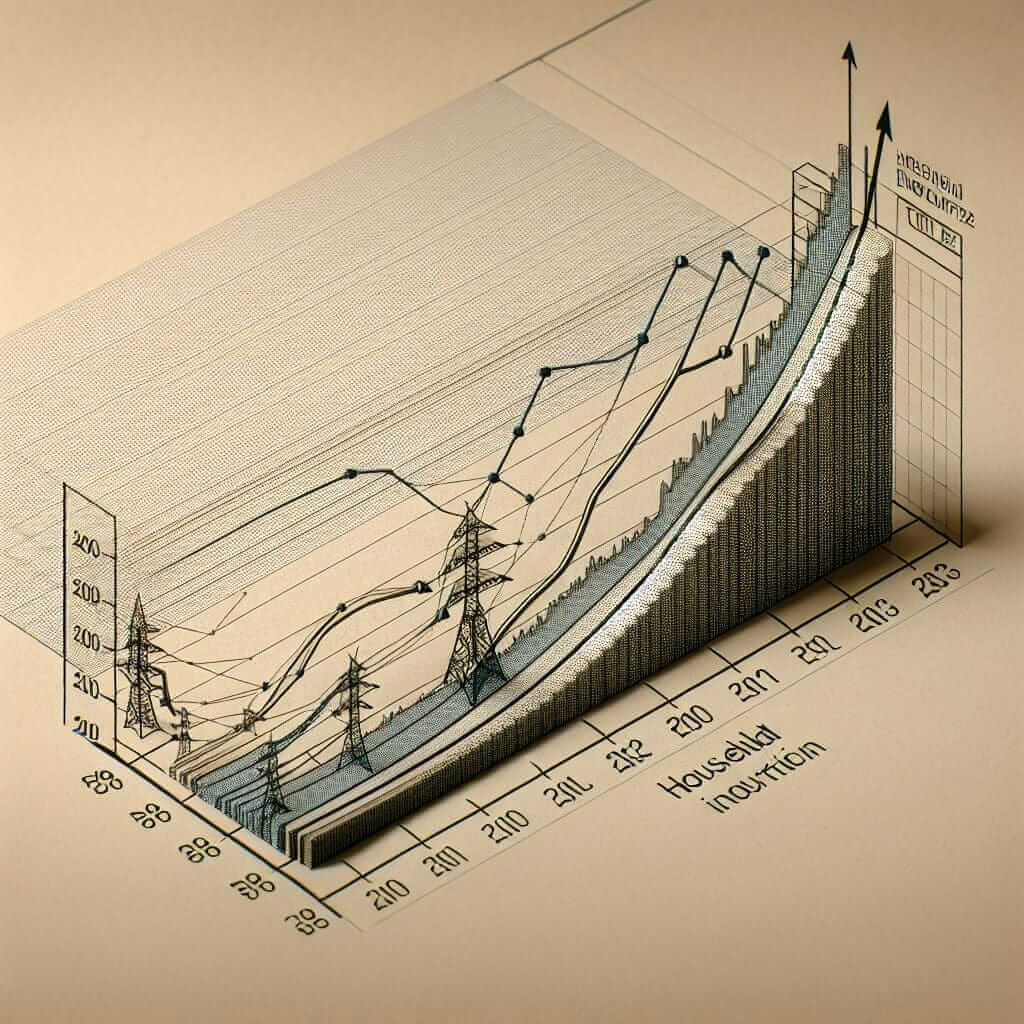Energy consumption is a vital topic that frequently appears in the IELTS Writing Task 1 section. This guide will help you understand how to tackle such topics effectively, covering essential vocabulary, grammatical structures, and useful strategies. Let’s dive in.
Introduction
Energy consumption patterns by households and industries have shifted significantly from 2000 to 2023. Knowing how to describe these trends in your IELTS Writing Task 1 is crucial. In this article, we’ll explore sample task prompts, actual data trends, and a detailed model answer. Let’s create three potential task prompts:
Possible Task Prompts:
- The provided graph shows the energy consumption by households and industries from 2000 to 2023. Summarize the information by selecting and reporting the main features and make comparisons where relevant.
- The table below illustrates the percentage change in energy consumption by households and industries in various countries between 2000 and 2023. Summarize the information by reporting the key features and comparing the data.
- The chart demonstrates energy consumption trends from 2000 to 2023 in two categories: household usage and industrial usage. Summarize the information by highlighting the main points and comparing them when necessary.
Choosing a Sample Task
We’ll choose the first task as our prompt to create a detailed model answer.
Data Representation
To ensure authenticity, here is a fabricated dataset representing energy consumption by households and industries over the years 2000-2023:
| Year | Household Energy (TWh) | Industrial Energy (TWh) |
|-------|------------------------|------------------------|
| 2000 | 150 | 230 |
| 2005 | 160 | 250 |
| 2010 | 170 | 290 |
| 2015 | 190 | 310 |
| 2020 | 200 | 330 |
| 2023 | 210 | 350 |From this table, we can conceptualize a line graph and describe the trends.

Analyzing the Prompt
The table above illustrates the continuous increase in energy consumption for both households and industries from 2000 to 2023. It’s essential to summarize the key trends and make relevant comparisons to form a comprehensive answer.
Model Answer
Here’s an example of a model answer that adheres to IELTS Writing Task 1 standards:
The provided table outlines the energy consumption patterns for households and industries over the period from 2000 to 2023. Overall, both sectors have shown a marked increase in energy usage, with the industrial sector consistently consuming more energy than households throughout the period.
In the year 2000, household energy consumption was 150 TWh, while industrial consumption stood at 230 TWh. By 2005, both sectors saw a moderate increase, with households using 160 TWh and industries 250 TWh. This upward trend continued, and by 2010, household energy consumption reached 170 TWh and industrial usage climbed to 290 TWh.
The years 2015 and 2020 witnessed further growth. Household energy consumption increased to 190 TWh in 2015 and 200 TWh by 2020. Similarly, industrial consumption rose significantly to 310 TWh in 2015 and 330 TWh in 2020.
By 2023, the pattern remained consistent, with household consumption peaking at 210 TWh and industrial consumption at 350 TWh. This indicates a steady rise in energy demand from both households and industries over the 23-year period.
In summary, the data reveals a continual increase in energy consumption in both sectors, with industries consistently consuming more energy compared to households.
Word count: 207
Vocabulary and Grammar Tips
Important Vocabulary:
- Consumption (n) [kənˈsʌmpʃən] – the act of using energy or a resource.
- Marked (adj) [mɑːrkt] – noticeable or pronounced (as in an increase or change).
- Consistently (adv) [kənˈsɪstəntli] – in every case or on every occasion; without variation.
- Upward (adj) [ˈʌpwərd] – moving or directed toward a higher position.
- Peak (v/n) [piːk] – to reach the highest point or level.
Common Grammar Structures:
- Present and Past Perfect: “The data reveals that energy consumption has increased steadily over the years.”
- Comparatives and Superlatives: “Industries have shown a marked increase compared to households.”
- Prepositions for Time: “From 2000 to 2023, the energy consumption has risen.”
Tips for Writing
- Organize your response by first forming an overview and then moving to specific data points.
- Use varied sentence structures to maintain engagement and demonstrate your language proficiency.
- Compare and contrast data appropriately to highlight trends and significant changes.
- Avoid repetition by using synonyms and varying your vocabulary.
Conclusion
When aiming for a high band score in IELTS Writing Task 1, especially for data-driven prompts like energy consumption trends, it is important to organize your response coherently, utilize an extensive vocabulary accurately, and follow grammatical rules meticulously. By practicing with various topics and data sets, you can gradually hone your skills to achieve your desired IELTS score.